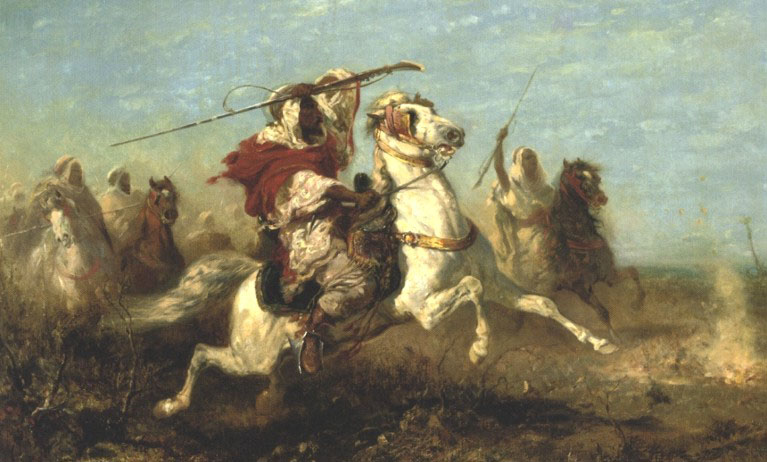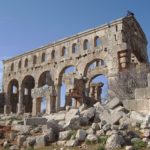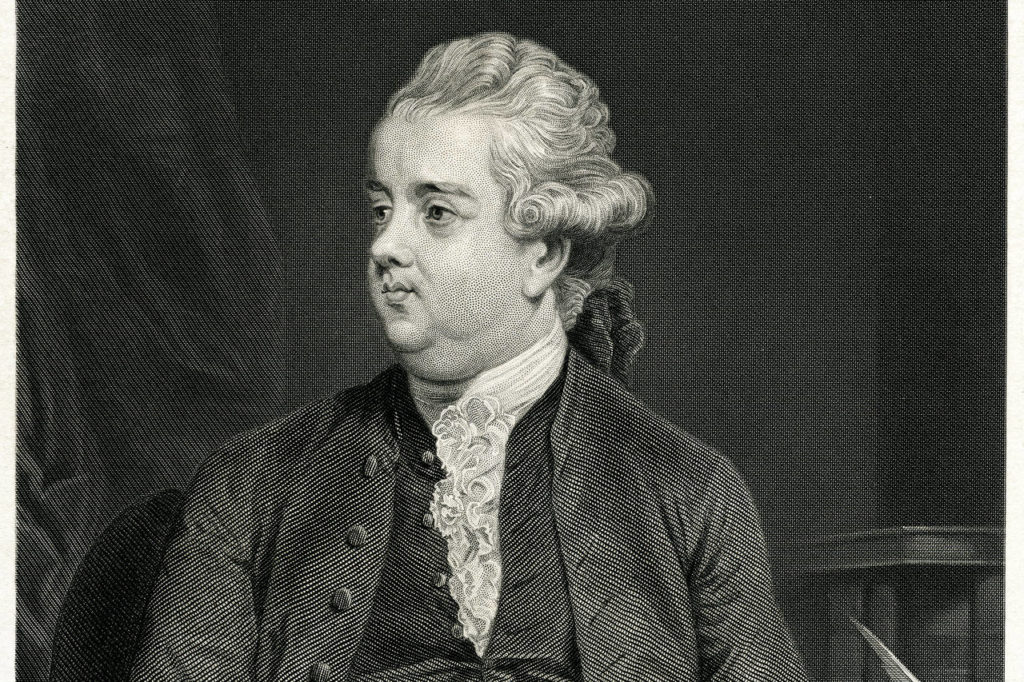
The German historian Leopold von Ranke stated that “History is made of documents, and every idea or act that does not leave a direct or indirect trace or whose features are obliterated is something lost to history, as if it never happened. There is no substitute for documents, and where there are no documents, there is no history.” [1]
BY NAFI SHABOU
THE FAMOUS IRAQI HISTORIAN Jawād ‘Alī in his book Al-Mufaṣṣal fī Tārīkh al-‘Arab says: “It may be that Muslim historians deliberately obscured the pre-Islamic history, and relied on the legends, myths, and stories of the ancients after they entered Islam. They did not rely on scientific foundations for writing history until two hundred years after Islam … After the 19th century Orientalist historians came to the conclusion that there are gaps and errors in pre-Islamic history.”
He goes on to add:
The Greek, Roman and Syriac sources are the most accurate. They wrote about the Arabian Peninsula before the rise of Islam due to the spread of Christians there, and in so doing are the ones who opened the door a true pre-Islamic history … The preaching of the Jewish and Christian scriptures covered the whole of Arabia and the Hejaz itself.[2]
In Andrew Miller’s Church History the following is stated:
Pirates appeared who came from the northern parts of Europe from the shores of the Baltic Sea in Denmark, Sweden and Norway. They were a mixture of Goths, Danes, Swedes and Norwegians, and although they were a mixture of multiple tribes, they agreed on the main goal of plundering and killing. Their kings and princes were the most skilled and daring pirates to invade the western Christian shores.
Fleets of pirates sailed from the islands of Scandinavia, and their ships were strongly built… they anchored on the shores of Europe, and not a square inch was spared the sudden attack of these cruel savages, not even if they were in the country’s heart… They were called ‘The Arabs of the Sea’ [because the Arabs were called ‘The Arabs of the Desert’].
He then adds:
“Their goals were plundering and looting, and they did not differentiate between the palace and the monastery, nor between the bishop and the prince, so long as there was abundant booty to be found.[3]
No era in the history of the Church (according to the writer), or perhaps in any history of any country was darker for Christian Europe than the end of the tenth century, with the multiplicity of powerful enemies. There were Muslims rising in the east, pagan northerners in the West, and there was also a new enemy, the Hungarians. In the harsh language of historical writing, these peoples were described as herds of savages or predatory animals that had been unleashed on humanity. Where they came from was unknown, while their numbers were beyond counting. There was killing and slaughter without any quarter, and they were a scourge on the human race in general.
In the introduction to his book Al-Ḥiqba al-Muẓlima fī Tarīkh al-Islām (‘The Dark Period in the History of Islam’) Aḥmad Rasmī has this to say:
“Islam, a religion followed by more than a billion people on the planet, and in whose name the most horrific killings have been committed for more than 1,400 years. Today, we are witnessing the crimes of ISIS, Al Qaeda, Boko Haram, the Muslim Brotherhood and others, all followers of this blood-soaked religion.
The scholar Patricia Crone, in her work Hagarism, stated that:
The interacting reactions of European history issued in a modernity which has engulfed the world; the unitary reaction of Islam issue in the Wahhābism of the inner Arabian wilderness.[4]
Patricia Crone explains the reasons for the Arab invasions, saying:
In all stages of history, we will discover that there are many reasons for the invasions against civilised cultures in the world, and the most important of these reasons are natural, political and economic (earthquakes – diseases – floods). Because of these conditions, civilizations weaken, and savages and barbarians exploit them to attack those civilizations. There are many examples of this: 1- The Hun barbarians and their invasion against the Romans; 2- The Mongols and the Tatars; 3- The invasion of the desert Arab tribes against the civilizations of Mesopotamia, Egypt the Persians and the Byzantines.
We may add a fourth: the last of these invasions was the Islamic State ‘ISIS’, when the terrorists similarly took advantage of a security vacuum. After the fall of the regime In Iraq led by Saddam Hussein and the collapse of the regime in Syria – ISIS took advantage of this vacuum to invade large areas of Iraq and Syria to restore what was called the ‘Islamic Caliphate’.
When these raids take place, they must have foundations, arguments, seasoned leaders, and factors that attract people to participate in obtaining the spoils. It is better that the justifications for these invasions be religious and ideological supported by proofs – even if those proofs are fictitious.
This is how invasions become sacralised, and this applies to the Arab invasions that launched from the Levant, Iraq, and the northwest of the Arabian Peninsula (there are recent studies that maintain that they were actually launched for the first time from Merv and the Caucasus), taking advantage of the weakness of the Persians and the Byzantines and the restlessness of the peoples occupied by these two empires. Some of these occupations exhausted those occupied to the point that they even abandoned their religious beliefs and ‘moral’ principles so as to take part themselves in these invasions, and become occupiers and invaders of other civilizations and countries, justifying all of this by referring to a heavenly legislation that could legitimize their savage and barbaric acts.
Ḥusām ‘Aytānī’s Al-Futūḥāt al-‘Arabiyya fī Riwāyat al-Maghlūbīn (‘The Arab Conquests as told by the Conquered’) cites what non-Arab historians wrote concerning the beginnings of these Arab conquests:
Alexander Vasiliev, the author of the History of the Byzantine Empire, asserts that the Bedouins who constituted the overwhelming majority of the soldiers of the (Arab) conquests had no other interest but loot and plunder, while their knowledge of Islam was only what they had heard, and stresses the absence of the religious factor in the raids. This reminds us of the conclusions that Caetani came to concerning the meager resources of the Arabian Peninsula and its inability to meet the needs of the population, without our fully adopting them.
Bernard Lewis draws a similar conclusion by saying that the Arab conquests are an expansion of the Arabs and not of Islam, that they were due to overpopulation and were part of the series of migrations that time after time carried Semites into the Fertile Crescent and beyond.

Suggested Reading
The reality of the Arab invasions – from non-Islamic sources – 2
In the sixth and seventh centuries, there were such cases of Arab expansion into these regions of the Fertile Crescent, while many cities such as Bosra (Syria) and Gaza (Palestine) had significant percentages of Arabs in their population. What contributed to the success of the conquests was the fact that the Persian and Byzantine barriers, once able to withstand the waves of Arab conquests and migrations, had become weak and that this weakness – as Patricia Crone also pointed out – is the very thing the Arabs owe their victories to.
The historian Edward Gibbon argued that:
A large deduction must be allowed for the weakness of their enemies. The birth of Mahomet was fortunately placed in the most degenerate and disorderly period of the Persians, the Romans, and the Barbarians of Europe: the empires of Trajan, or even of Constantine or Charlemagne, would have repelled the assault of the naked Saracens, and the torrent of fanaticism might have been obscurely lost in the sands of Arabia.[5]
That is, prioritising the Islamic religious motive is insufficient to explain the victories, given that the weakness of the opposing side constitutes the fundamental cause according to the above view. In addition to the economic and religious reasons there are undoubtedly – according to Fred Donner and a number of other Orientalist scholars – political-strategic motivations that placed Syria at the top of the list of priorities for Muḥammad and the caliphs, especially after the defeat of the Persians and after the Sasanian emperor Khosrow Parviz (Khosrow II 590-628 AD) had dismantled the Arab kingdom of Al-Ḥīra (in Iraq) before the outbreak of the last round of the Byzantine-Persian wars that also destroyed the remnants of the Ghassanid kingdom (the Arabs in the Levant ).
[1] Note: This research is in collaboration with my research colleague ‘Ādil Ḥanallah
[2] Jawād ‘Alī, المفصل في تاريخ العرب Vol. 4 and Vol. 5, p.434.
[3] Andrew Miller, History of the Church, p.233.
[4] Patricia Crone and Michael Cook, Hagarism, the Making of the Islamic World, CUP, 1977, p.146
[5] Edward Gibbon, The Decline and Fall of the Roman Empire, Chapter 51.



